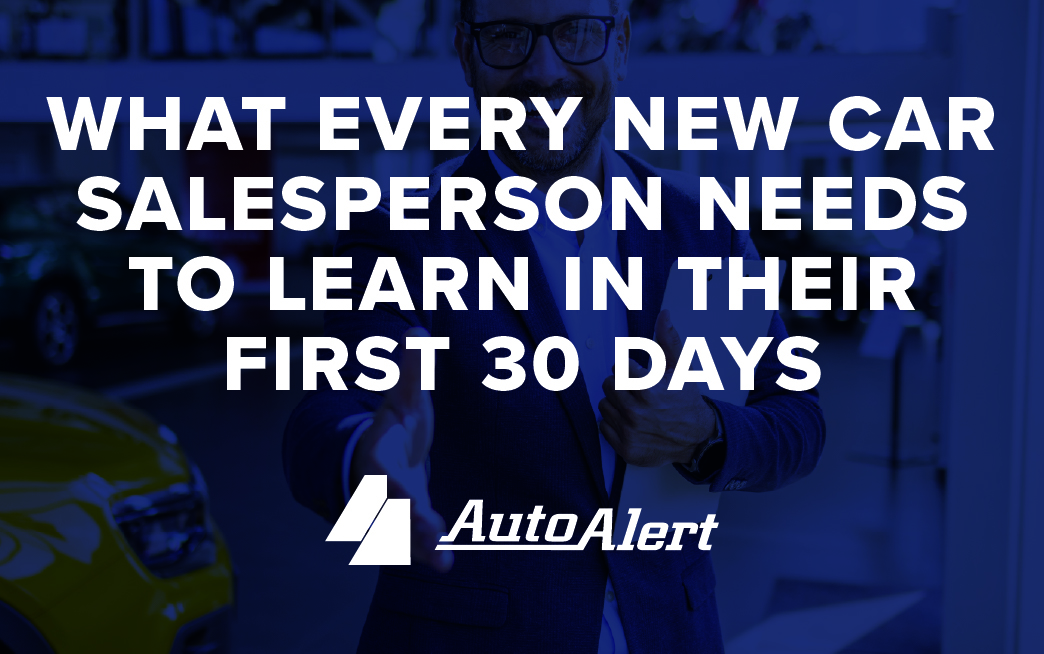The First 10 Minutes: What to Say (and Not Say) When a Buyer Walks In
Those first 10 minutes with a buyer are make-or-break. Why? Because customers form opinions fast. What you say (and how you say it) in those early moments can either build trust or break rapport and greatly influence whether customers want to do business with you.
Top salespeople know that improving your car dealership sales process isn’t about saying more—it’s about saying the right things at the right time. And just as importantly, knowing what not to say.
This blog breaks down the Do’s and Don’ts of what to say to car buyers when you first meet them.


1. Get the First Impression Right the First Time: Minutes 1-3
When a buyer walks into your dealership or onto the lot, they size you up. Are you going to pressure them? Ignore them? Waste their time? That first impression can’t be taken back, so your first move is very important, as is recognizing sales tactics to avoid at your dealership.
Do: Greet With Confidence and Warmth
Start with a warm, confident, and low-pressure greeting. A good line would be, “Hi there, welcome! What brings you in today?” It’s open and friendly, without being pushy. This approach opens the door to conversation and invites the buyer to share their intent on their terms. It’s not just what you say but how you use your tone and body language to create connections.
Don’t: Jump Straight to the Sale
You don’t want to come across as transactional. The first 10 minutes should be about connection, not closing. Avoid saying things like, “Are you here to buy today?” or “We’ve got some great deals ending soon.” These pressure-packed lines trigger buyer defenses and are all about you making a sale, not them finding what they need.
Do: Observe and Acknowledge
If the buyer is already looking at a car or has arrived with information in hand, acknowledge it. Say, “I see you’ve done your homework—great choice! That vehicle is one of our most popular models. What do you like about it?” This shows attentiveness, not pushiness. People like to feel seen and validated, and this builds credibility quickly.
Don’t: Assume or Over-talk
Avoid being assumptive and saying, “You probably want something with better gas mileage, right?”, and/or overloading with information before asking any questions. These scenarios can overwhelm the buyer and kill the energy.


2. Build Connection and Gather Insight: Minutes 4-7
Top salespeople ask open-ended questions to better understand their customers’ intent, motivation, and needs. They’re not hunting for a quick close—they’re working toward a smart match.
Do: Ask Open-Ended Questions
Now that you’ve made a welcoming intro, shift into discovery mode. Think of yourself as a guide, not a closer. Use this time to gauge needs and how you can align the right vehicle to the customer’s real needs. Ask questions that get the customer thinking and talking about their priorities, like:
- “Where are you in the car-shopping journey?”
- “What’s most important to you in a vehicle?”
- “What are you driving now?”
- “What kind of driving do you usually do—mostly city, highway, or a mix?”
- “Are you looking for something brand new, or are you open to used as well?”
- “Who else will be driving the car?”
Don’t: Fire Off a Sales Script
Buyers can smell a canned pitch a mile away. If your questions feel robotic or you’re checking off boxes, they’ll tune out fast. You don’t want to push them toward a certain car without understanding their goals. Avoid saying: “How much are you looking to spend?” or “Are you trading something in?” These are good questions for later. In the first 10 minutes, they can appear transactional and make buyers feel like just a number.
Do: Match Their Energy and Tone
If the buyer is laid-back, don’t approach them in a hyper manner or seem like you’re in a hurry. If they’re energetic and curious, then match that vibe. Use subtle mirroring with your pace, tone, and body language to create rapport. People like to buy from those they feel they “click” with.
Don’t: Talk Price Too Early
Bringing up pricing or financing before they’re even sold on the car is like proposing on the first date. If they ask about price early, deflect gracefully, saying, “Absolutely—we’ll go over all the numbers together. First, I want to ensure we’re looking at something that fits what you’re after.” This shows you’re focused on their needs, not just the sale.


3. Set the Stage for the Sale (Without the Pressure): Minutes 8-10
Once you have a feel for what they’re looking for, start building a picture of how the vehicle can support their lifestyle. You still want to keep the ball in the customer’s court and not add any pressure to these exchanges.
Do: Create Excitement Around the Right Fit
You’re not “selling” here, you’re translating features into real-life value. This is where you might say, “You mentioned road trips with the family—this SUV has second-row climate controls and extra cargo space. Super helpful on long drives.” When buyers feel like you understand them, the trust factor goes up, and resistance goes down.
Don’t: Show Off Knowledge Just to Impress
Dropping jargon or rattling off specs may sound impressive, but if it’s not relevant, it’s wasted breath. Instead, tailor your knowledge to what you learned that would be helpful to their individual needs. Say something like, “Let’s take a quick look together. I can show some of its best features.” This shifts the experience from a conversation into doing something with them. You’re saying, “Let me be your guide here.”
Do: Offer a Test Drive, but Casually
Top salespeople treat the test drive as confirmation, not persuasion. Rather than ask, “Do you want to take it for a test drive?” say, “Want to see how this one feels on the road? I can grab the keys.” You’re not asking for a commitment, you’re offering an experience. This keeps the momentum moving forward without pushing.
Don’t: Use High-Pressure Language
Again, timing is everything. The right words said too early can ruin an otherwise promising conversation. Avoid saying, “You’re not going to find a better deal anywhere else,” or “This one won’t be here tomorrow.” Even if those statements are true, they create pressure and can completely undo all the trust you’ve built. Save urgency for later stages if needed—but not in the first 10 minutes.
What to say to car buyers and what not to say in the first 10 minutes may seem like a lot of pressure to get it right, but with a little intention and practice, it will start to come naturally. You will then learn how to make little tweaks to your personal style that further maximize the effectiveness of your interactions.
People may not like being sold, but they love buying, especially when they feel understood, respected, and guided by someone who encompasses skills every great car salesperson should have and genuinely wants to help. Make your first 10 minutes count by being someone your customers can work with rather than work against.




